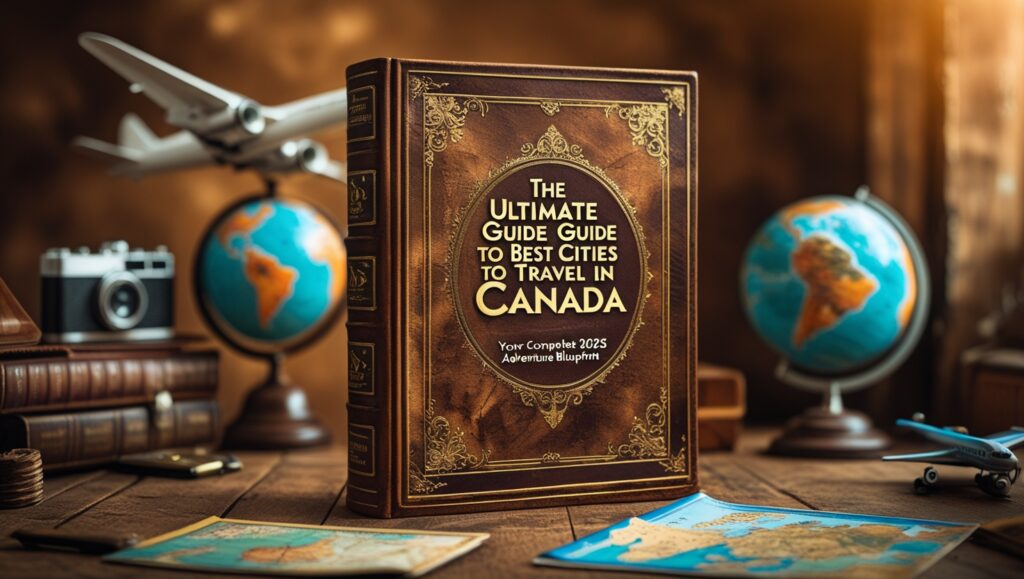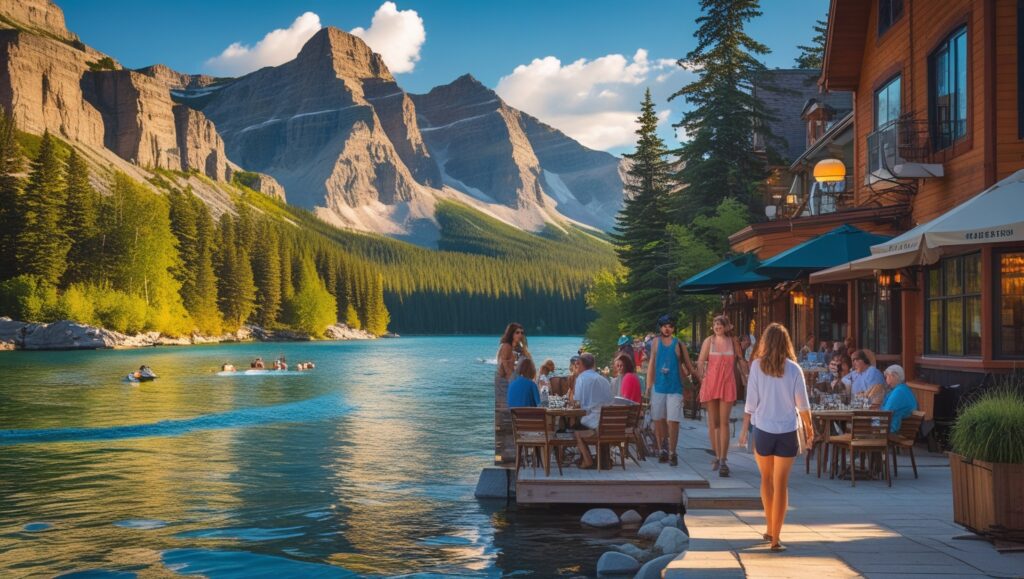Table of Contents
Introduction
Did you know that over 22 million international visitors choose to travel in Canada each year, yet 73% of them visit only three major cities? This statistic reveals a fascinating truth about Canadian tourism that challenges the common belief that you need to explore remote wilderness to experience the true essence of Canada. While the Great White North is renowned for its pristine natural landscapes, the real magic often lies in its vibrant urban centers where culture, history, and modernity converge in spectacular fashion.

When you travel in Canada, you’re not just visiting another country – you’re stepping into a mosaic of experiences that span from European-influenced architecture to cutting-edge culinary scenes, from world-class museums to festivals that celebrate the nation’s incredible diversity. The question isn’t whether Canada’s cities are worth visiting, but rather which ones will provide the most unforgettable experiences for your specific interests and travel style.
Top Canadian Cities Every Traveler Must Experience
Toronto: The Cosmopolitan Heart of Canada
Toronto stands as Canada’s largest city and economic powerhouse, offering an unparalleled urban experience when you travel in Canada. With over 2.9 million residents representing more than 200 ethnicities, Toronto embodies the true spirit of Canadian multiculturalism.
Key Attractions:
- CN Tower and EdgeWalk experience
- Royal Ontario Museum
- Distillery District’s cobblestone charm
- Toronto Islands escape
- Ripley’s Aquarium of Canada
The city’s food scene alone makes it worth the visit, with over 8,000 restaurants representing cuisines from every corner of the globe. The PATH underground walkway system, spanning 30 kilometers, allows visitors to explore downtown even during harsh winter months.
Vancouver: Where Mountains Meet Ocean
Vancouver consistently ranks among the world’s most livable cities, and when you travel in Canada’s west coast gem, you’ll immediately understand why. The city offers a unique combination of urban sophistication and natural beauty that’s virtually unmatched globally.
Must-See Destinations:
- Stanley Park’s 1,000-acre urban oasis
- Granville Island Public Market
- Capilano Suspension Bridge
- Gastown’s historic steam clock
- Queen Elizabeth Park’s quarry garden
Vancouver’s mild climate makes it an ideal year-round destination, with average temperatures rarely dropping below freezing. The city serves as a gateway to outdoor adventures, with world-class skiing just 30 minutes away and hiking trails accessible via public transit.
Montreal: European Charm in North America
Montreal offers a distinctly European experience when you travel in Canada, combining French sophistication with North American energy. As the second-largest French-speaking city in the world, Montreal provides cultural immersion unlike anywhere else on the continent.
Cultural Highlights:
- Old Montreal’s 17th-century architecture
- Notre-Dame Basilica’s stunning interior
- Mount Royal’s panoramic city views
- Underground City’s climate-controlled shopping
- Plateau Mont-Royal’s bohemian atmosphere
The city hosts over 100 festivals annually, including the world-famous Just for Laughs comedy festival and the Montreal International Jazz Festival, which attracts over 2 million visitors each summer.
Quebec City: A UNESCO World Heritage Treasure
Quebec City transports visitors to medieval Europe without leaving North America. As the only fortified city north of Mexico, Quebec City offers an authentic historical experience that makes every moment feel like stepping through time.
Historical Wonders:
- Plains of Abraham battlefield
- Château Frontenac’s iconic silhouette
- Petit Champlain’s narrow cobblestone streets
- Citadelle of Quebec’s star-shaped fortress
- Montmorency Falls’ 83-meter cascade
The city’s Winter Carnival, dating back to 1894, transforms Quebec into a magical wonderland each February, featuring ice sculptures, snow slides, and the famous Bonhomme mascot.
Calgary: Gateway to the Canadian Rockies
Calgary combines urban amenities with western hospitality, serving as the perfect launching point for Rocky Mountain adventures. The city’s dramatic skyline contrasts beautifully with the mountain backdrop visible on clear days.
Urban and Natural Attractions:
- Calgary Tower’s 360-degree city views
- Heritage Park Historical Village
- Calgary Zoo’s Canadian Wilds exhibit
- Prince’s Island Park’s downtown oasis
- Stephen Avenue Walk’s pedestrian mall
Calgary’s proximity to Banff National Park (just 90 minutes away) makes it an ideal base for exploring Canada’s mountain wilderness while enjoying urban comforts.
Ottawa: Capital City Elegance
As Canada’s capital, Ottawa offers a perfect blend of political significance, cultural richness, and natural beauty. The city’s well-preserved architecture and numerous museums provide deep insights into Canadian identity and history.
Government and Culture:
- Parliament Hill’s Gothic Revival architecture
- National Gallery of Canada’s glass and granite design
- ByWard Market’s 200-year-old farmers market
- Rideau Canal’s UNESCO World Heritage status
- Canadian Museum of History’s cultural exhibitions
Ottawa’s Rideau Canal becomes the world’s largest naturally frozen skating rink in winter, stretching 7.8 kilometers through the heart of the city.
Planning Your Canadian City Adventure
Best Time to Visit
The optimal time to travel in Canada depends on your preferred activities and weather tolerance. Summer months (June-August) offer the warmest weather and longest daylight hours, perfect for outdoor exploration and festival attendance. However, this peak season also brings higher prices and larger crowds.
Spring (April-May) and fall (September-October) provide comfortable temperatures, fewer tourists, and stunning seasonal changes. Winter travel in Canada offers unique experiences like ice hotels, winter festivals, and northern lights viewing, though temperatures can be challenging for some visitors.
Transportation Between Cities
Canada’s vast geography requires strategic transportation planning. The country’s efficient transportation network includes:
VIA Rail: Connects major cities with comfortable, scenic routes Domestic Flights: Quick connections between distant cities Highway System: Well-maintained roads perfect for road trips Public Transit: Excellent systems within major urban centers
Budget Considerations
Traveling in Canada can vary significantly in cost depending on your choices. Major cities like Toronto and Vancouver tend to be more expensive, while eastern cities often offer better value. Budget approximately:
- Accommodation: $80-200 CAD per night
- Meals: $40-80 CAD per day
- Local transportation: $10-15 CAD per day
- Attractions: $20-40 CAD per site
Cultural Experiences and Local Cuisine
Culinary Adventures
Canadian cuisine reflects the country’s multicultural identity. When you travel in Canada’s cities, you’ll discover regional specialties that tell the story of local communities:
Toronto: International fusion and diverse ethnic enclaves Montreal: French-Canadian classics like poutine and smoked meat Vancouver: Fresh Pacific seafood and Asian influences Quebec City: Traditional Quebecois cuisine and maple specialties Calgary: Alberta beef and prairie-inspired dishes Ottawa: BeaverTails pastries and craft brewery scene
Festivals and Events
Canada’s cities come alive with festivals throughout the year. Major events include Toronto International Film Festival (September), Montreal’s Jazz Festival (June-July), Calgary Stampede (July), Vancouver Folk Music Festival (July), and Ottawa’s Winterlude (February).
Practical Travel Tips
Weather Preparedness
Canadian weather can change rapidly, especially during transitional seasons. Pack layers and waterproof gear regardless of the season. Winter visitors should invest in quality cold-weather clothing, including insulated boots, warm coats, and accessories.
Currency and Payments
Canada uses the Canadian dollar (CAD), and most establishments accept credit cards. Tipping is customary (15-20% at restaurants), and many businesses now offer contactless payment options.
Language Considerations
While English is widely spoken across Canada, Quebec’s primary language is French. Learning basic French phrases enhances the Quebec experience, though most tourism-related businesses accommodate English speakers.
Hidden Gems and Local Secrets
Each Canadian city harbors lesser-known attractions that provide authentic local experiences:
- Toronto’s Graffiti Alley showcases vibrant street art
- Vancouver’s Dr. Sun Yat-Sen Classical Chinese Garden offers tranquil escape
- Montreal’s Jean-Talon Market bustles with local flavors
- Quebec City’s secret stairways reveal hidden neighborhoods
- Calgary’s Inglewood Bird Sanctuary provides urban wildlife viewing
- Ottawa’s Experimental Farm demonstrates agricultural research
Seasonal Activities and Attractions
Summer Adventures (June-August)
Summer travel in Canada opens up endless possibilities. Cities host outdoor concerts, street festivals, and patio dining. Hiking trails, cycling paths, and waterfront activities become accessible and enjoyable.

Winter Wonders (December-February)
Winter transforms Canadian cities into magical wonderlands. Ice skating, winter festivals, and cozy indoor attractions create memorable experiences. Many cities offer heated underground walkways for comfortable exploration.
Spring Renewal (March-May)
Spring brings cherry blossoms, tulip festivals, and renewed energy to Canadian cities. Temperatures moderate, making it ideal for walking tours and outdoor exploration without summer crowds.
Fall Colors (September-November)
Autumn travel in Canada showcases spectacular foliage, harvest festivals, and comfortable temperatures. Cities surrounded by forests offer stunning color displays that rival New England’s famous fall scenery.
Conclusion
Canada’s cities offer an incredible diversity of experiences that showcase the nation’s rich cultural heritage, natural beauty, and modern innovation. From Toronto’s cosmopolitan energy to Quebec City’s European charm, from Vancouver’s mountain-ocean backdrop to Montreal’s French flair, each destination provides unique reasons to visit. Whether you’re drawn to world-class museums, diverse culinary scenes, vibrant festivals, or friendly locals, Canadian cities deliver unforgettable travel experiences that will leave you planning your return visit.
Ready to embark on your Canadian adventure? Start planning your journey to these remarkable cities and discover why millions of travelers choose to explore urban Canada each year. Share your favorite Canadian city experiences in the comments below, and don’t forget to subscribe to our blog for more travel inspiration and practical tips for your next adventure!
Frequently Asked Questions
Q: What’s the best city for first-time visitors to Canada? A: Toronto offers the most comprehensive Canadian experience, combining multiculturalism, major attractions, and easy access to Niagara Falls. It’s an excellent introduction to Canadian urban life.
Q: How many days should I spend in each city? A: Plan 3-4 days for major cities like Toronto, Vancouver, and Montreal to see main attractions. Smaller cities like Quebec City and Ottawa can be explored in 2-3 days, while Calgary works well as a 2-day stopover before mountain adventures.
Q: Is it expensive to travel between Canadian cities? A: Costs vary by transportation method and booking timing. VIA Rail offers scenic routes at moderate prices, while domestic flights provide speed but can be costly. Road trips offer flexibility and can be budget-friendly for groups.
Q: What’s the safest way to travel in Canada? A: Canada consistently ranks among the world’s safest countries. All major cities have low crime rates, reliable public transportation, and excellent healthcare systems. Standard travel precautions apply.
Q: Can I visit multiple cities in one trip? A: Absolutely! Canada’s transportation network makes multi-city trips feasible. Popular routes include Toronto-Montreal-Quebec City in the east, or Vancouver-Calgary-Toronto for a cross-country experience.
Q: What should I pack for a Canadian city trip? A: Pack layers regardless of season, comfortable walking shoes, waterproof jacket, and weather-appropriate outerwear. Summer visitors should include light clothing and sunscreen, while winter travelers need serious cold-weather gear.
Q: Do I need a visa to travel in Canada? A: Visa requirements depend on your nationality. Many countries require an Electronic Travel Authorization (eTA) or visitor visa. Check the Government of Canada’s website for current requirements based on your citizenship.
Q: What’s the best way to experience local culture in Canadian cities? A: Visit local markets, attend festivals, explore ethnic neighborhoods, try regional specialties, and engage with locals. Each city offers unique cultural districts that showcase Canada’s multicultural identity.
